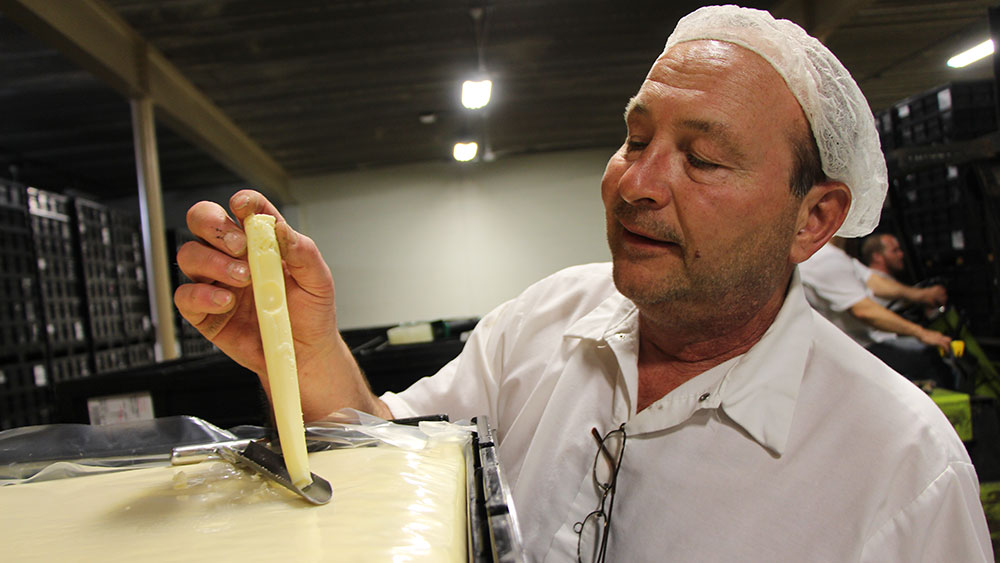From Thomastown to Your Table: The Excellence of Floridia Cheese Melbourne
From Thomastown to Your Table: The Excellence of Floridia Cheese Melbourne
Blog Article
Opening the Keys of Artisanal Cheese Making: A Step-by-Step Do It Yourself Overview
In the realm of cooking craftsmanship, artisanal cheese making stands as a testimony to the fragile balance between custom and development. Each action in the process, from picking the right milk to improving aging strategies, holds within it a wealth of understanding gave via generations. As we embark on this trip to debunk the art of developing splendid cheeses, we are encountered with a tapestry of skills and tricks waiting to be unraveled. Join us as we explore the ins and outs of this old craft, where scientific research, art, and perseverance assemble to create tastes that entice the detects.
Selecting the Right Milk
When beginning on the journey of artisanal cheese production, the choice of milk plays a critical duty in determining the top quality and features of the end product. The sort of milk picked influences the taste, appearance, and generally profile of the cheese. Raw milk, straight from the pet, is favored by lots of artisanal cheesemakers because of its special mix of enzymes, germs, and flavor substances. Making use of raw milk comes with regulations and threats, making pasteurized milk a safer choice for novices.
In addition, the source of the milk, whether from cows, goats, lamb, or buffalo, adds distinct tastes and characteristics to the cheese. Each type of milk brings its very own subtleties, enabling for a vast range of cheese ranges to be crafted based on the picked milk.
Culturing and Coagulating
To start the cheese-making procedure, the crucial steps of culturing and coagulating should be very carefully implemented to transform milk into curds and whey. Culturing involves introducing useful germs to the milk, which after that starts the fermentation procedure. These bacteria convert lactose (milk sugar) into lactic acid, developing the acidic setting essential for coagulation. The kind of society used can considerably influence the taste, texture, and ripening of the final cheese product.

The timing and temperature level control during culturing and coagulation are critical variables that influence the final outcome of celebrity. Proper implementation of these steps is important to ensure the wanted structure, taste, and uniformity of the artisanal cheese being created.
Draining and Pushing Curds
After the milk proteins have actually coagulated and the curds have been reduced to release whey, the following essential action in artisanal cheese making entails draining and pushing the curds to achieve the wanted texture and uniformity of the final cheese product. Draining pipes is the process of dividing the curds from the whey. This can be done by moving the curds right into a cheesecloth-lined colander or mold and mildew and allowing the whey to drain pipes off normally. The moment for draining can differ depending on the kind of cheese being made and the desired wetness web content.
When the curds have actually completely drained, the next action is pushing. Pushing helps remove any kind of remaining whey and compacts the curds to form a solid cheese wheel. Pressing can be done utilizing specialized cheese presses that apply mild and regular pressure over an amount of time. The duration and pressure used throughout pressing will influence the final structure of celebrity, from soft and luscious to hard and company. Proper pressing and draining are critical actions that significantly impact the high quality and features of the artisanal cheese being generated.
Aging and Flavoring Techniques
Implementing meticulous aging and flavor techniques is critical in enhancing the depth and intricacy of artisanal cheeses, elevating their taste accounts to splendid degrees of refinement and refinement. Aging plays a vital role in establishing the one-of-a-kind tastes and textures that differentiate artisanal cheeses.
Seasoning techniques likewise add considerably to the last preference of artisanal cheeses. Cheesemakers might my response choose to introduce extra tastes by incorporating components such as natural herbs, seasonings, or perhaps fruits into celebrity during the manufacturing procedure. In addition, some cheeses are washed or rubbed with different fluids, such as salt water or alcohol, to boost their tastes and appearances.
Covering and Saving Cheeses

Conclusion
In conclusion, mastering the art of artisanal cheese making includes meticulously selecting the best milk, complying with specific culturing and coagulating processes, draining and pressing curds successfully, and making use of numerous aging and flavoring methods. Keep in mind to cover and save your cheeses properly to ensure optimal flavor and structure advancement.
Each kind of milk brings its very own nuances, enabling for a large array of cheese ranges to be crafted based on the selected milk.After the milk healthy proteins have actually coagulated and the curds have actually been reduced to launch whey, the following crucial step in artisanal cheese making includes draining and pressing the curds to achieve the desired texture and consistency of the last cheese item. The majority of cheeses need to be covered in wax paper or cheese paper to allow them to take a breath while securing them from drying out. For cheeses that require to continue aging, such as bloomy peels or washed rinds, ensure they are stored in a read what he said trendy setting like a cheese cavern or a fridge set to the suitable temperature. By paying attention to the covering and storage space of artisanal cheeses, cheese manufacturers and fanatics can maintain the stability of these delicacies and fully appreciate their intricate flavors.
Report this page